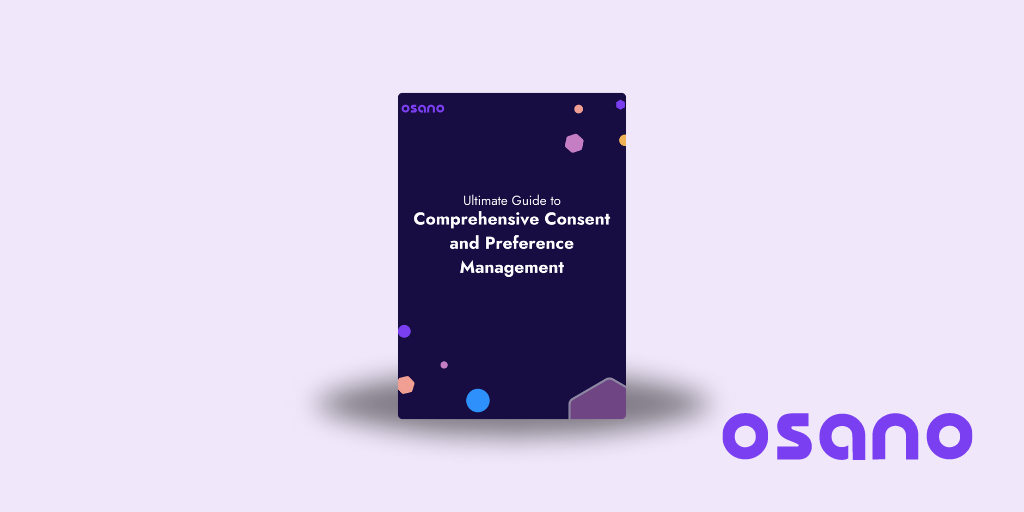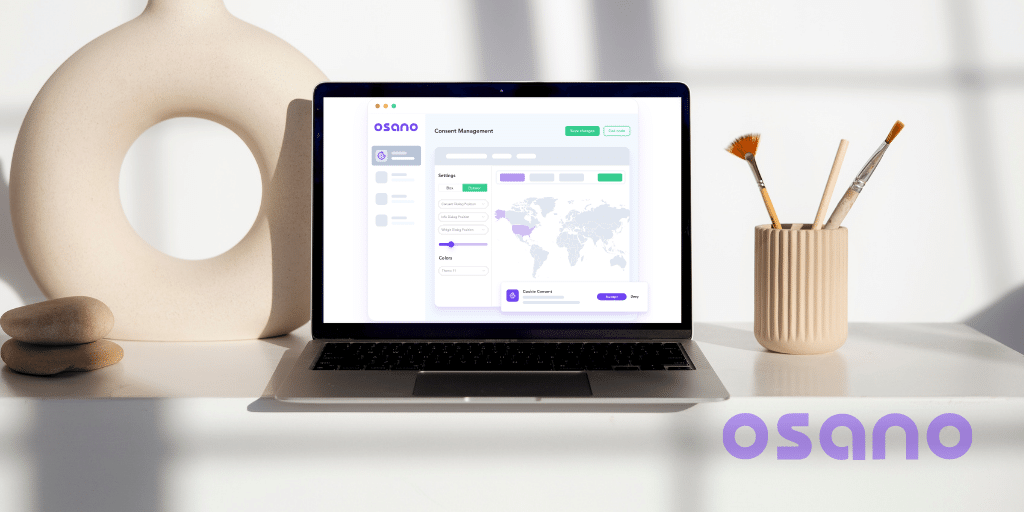Types of Consent
There are three approaches to the type of consent a company provides: opt-in, opt-out, or hybrid. All share a common thread in that they obtain consent to collect, use, and disclose personal information.
Opt-out Consent
Most commonly recognized by US consumers, opt-out is a method in which companies divulge that they collect and use data and allow users to opt-out if they wish. With this option, a user must take an action, like unchecking a pre-checked box or filling out a form to withdraw their consent for data to be collected and used.
An article published by the Information Technology & Innovation Foundation suggests that “the overwhelming evidence shows that in most cases opt-out rules for data collection and sharing are better for innovation and productivity while still protecting privacy.”
The CCPA requires websites to disclose the information they collect and its purpose, but it doesn’t stipulate the method in which this is achieved.
It’s important to note that the opt-out method is no longer accepted in the European Union, making opt-in the go-to method for companies who operate internationally as they work to maintain compliance with privacy regulations. The GDPR requires that users opt in and out of the use of data, and if you’re processing sensitive personal data, explicit consent via an opt-in method is required.
Opt-in Consent
With opt-in consent, users must take an action to confirm their consent to collect and use information. Companies use this method for opting in to cookies, subscriptions, and more. This option is less common in the US because it makes companies responsible for obtaining consent before processing, rather than users granting consent by default. As states and other geographic regions implement data privacy and management policies, relying solely on this type of policy will become more challenging. Doing so could put a company at risk of falling out of compliance.
Requiring users to manually consent to some or all of a company’s data collection and use policies gives consumers greater control over their data and its use, and having a user-friendly policy can help build trust and loyalty.
GDPR requires consent to be opt-in, while the CCPA only stipulates that consumers have the right to opt out, “meaning, the right to tell a business to stop selling their personal information,” the California Department of Justice notes.
A Hybrid Model
Because the privacy landscape is rapidly evolving, sometimes the answer to “which option is right for my company?” isn’t clear. A hybrid approach incorporates elements of both opt-in and opt-out models, depending on the type of data being collected and how that data is being used.
An example of a hybrid model would be a company using an opt-out method unless it's collecting sensitive personal information. In that instance, the company would switch to opt-in and receive a user’s explicit consent to collect and process personal data. A hybrid model can provide companies with a solution to be legally compliant with GDPR, CCPA, and other standards while giving users control of their data privacy — a win-win.
Consent Management Platforms Can Help
As its name implies, a consent management platform (CMP) is a tool that collects and manages user consent and passes the information downstream to third-party vendors. CMPs automate the consent process, obtain permission for using cookies to track data, and allow users to update their preferences easily.
CMPs comply with ever-changing data privacy laws, helping businesses stay compliant while meeting their business goals. For example, if a company uses third-party apps, such as pixels or social media, scripts are blocked until the user consents to cookies. This keeps third parties from unintentionally making a website non-compliant with privacy regulations.
CMPs can track and record visitors, and they can alert companies to issues that could put them at risk of violating various data privacy regulations. In addition, CMPs can display easy-to-understand cookie banners that request consent for data collection and provide information to users on what information is collected and how it will be used, building transparency and trust from the first time a visitor opens the webpage.
Other benefits of using a consent management platform include:
- Quickly handling data subject access requests (DSARs). The GDPR provides people with what’s known as “the right to access,” and the CCPA has established similar rights, enabling EU residents to learn what an organization knows about them and how it uses that information by submitting a request. Companies are obligated to respond, which can be burdensome, mainly if there is an influx of requests or information isn’t stored in one place. Automated workflows help companies better manage DSARs.
- Streamlining operations. Companies can create a central repository of compliant consent responses to use across departments and the company overall.
- Spending team members’ time and resources elsewhere. Implementing a CMP can save time and resources because it automates the consent process and stays up to date with regulation changes, no matter where you’re located or where you do business. Company IT departments can rest assured they’re protecting users' data while also meeting global regulations.
- Building trust with customers and potential customers. When customers feel like a company is looking out for their best interests, it creates a positive experience that they tend to share with friends, family, and even strangers.
- Meeting your company’s needs with custom-built solutions. When it comes to consent management, one size doesn’t fit all. That’s why it’s crucial to find a CMP that offers flexibility and can help you meet your goals with minimal (if any) interference with your company’s overall goals and objectives. Features like the ability to change the language of your consent messaging, vendor risk monitoring, policy change detection, and speaking to a team of experts can help make consent management easier to oversee.
Get Peace of Mind With a CMP
We get it. Data privacy laws, data collection, and cookie and consent management can leave your mind swimming, especially if you’re not an expert in these fields. And it can feel like a moving target to try and comply with the laws of more than 40 countries while also running your business.
A consent management platform can give both customers and business owners peace of mind. Not only are you ensuring your business is compliant with GDPR, CCPA, and other regulations, but you’re also guaranteeing vendors and others you do business with aren’t putting your company at risk of noncompliance.
Osano has intelligent consent, which automatically displays and enforces consent requirements based on the geolocation of each visitor to your website. With 40+ supported languages, third-party blocking, and alerts for issues that pop up, business owners can sleep well knowing Osano has got their back.
Try Osano for Free
We hope we’ve answered your questions about consent management platforms, but if you have more questions. You don’t have to try and navigate complex policies and regulations alone.
Are you interested in a demo or free trial? Sign up or compare plans.
The Ultimate Guide to Consent & Preference Management
Explore the various aspects of consumer choice management in this comprehensive guide.
Download Your Copy
.webp?width=1220&height=1090&name=Osano-guarantee-seal%20(1).webp)




